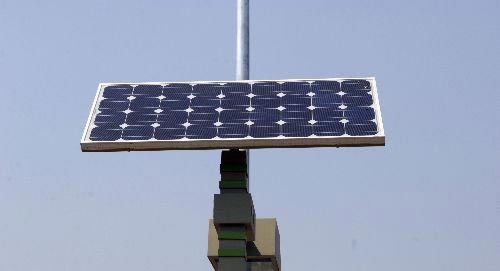Its blue bubbling translucent exterior, also a part of the Water Cube's environmental design, is said to allow the sunlight to be harnessed to heat the swimming pool and save thermal loss.
New energy models
Apart from cutting energy consumption, some Games' venues are also trying new energy supply systems, which environmentalists hope is not just a practice of a green Olympics, but also a model for the entire country now searching for a road of sustainable development.
A set of solar power generators with a capacity of 100 kw has been installed in the National Stadium's roof and south glass wall to supply power for its underground parking lot, Li said.
After the Olympics, the solar power produced by the stadium will be merged into the city's power grid and provided to local families if there are no sport events there.
The solar power generators installed around the Chaoyang Park Beach Volleyball Ground are more delicate, as their solar plates adjust to the angle of the sun's movement for a maximum absorption of sunlight.
In the Beijing Science and Technology University Gymnasium, which will host the judo and taekwondo matches, 148 light conductors, each eight meters long, help transmit 80 percent of the sunlight into the gym, enough for the athletes' training or physical education classes.
"There's hardly any necessity to turn on lights inside the gym in the daytime, and the conductors can also pass the indoor light out at night, making the gym a good night view," said an official in charge of the building's reconstruction work.
Natural ventilation
With scorching sunshine and no air conditioning, it can be somewhat torturous to watch an open air tennis match.
But the flower-shaped Olympic Green Tennis Center, with a seating capacity of 17,400, can assure a more comfortable environment.
The center's three main courts, all dodecagonal with each of the 12 sides as a stands, are said to be five degrees Celsius cooler than the temperature outside.
The air is allowed to flow in the courts through the gaps between the stands, which are spread out like 12 petals of a lotus flower. The set-up forms air circulation inside the court with a wind speed of up to two meters per second, an official in charge of the center explained.
"The Olympic venues will leave us a great treasure, a paragon for energy saving and environmental sustainability," he said.

The solar-power street lamp outside Olympic venues.
(Xinhua News Agency July 17, 2008)